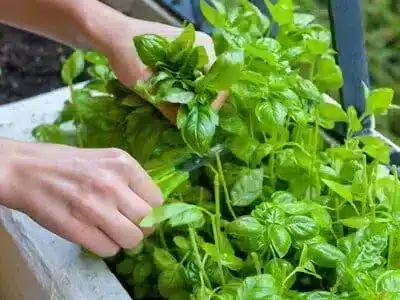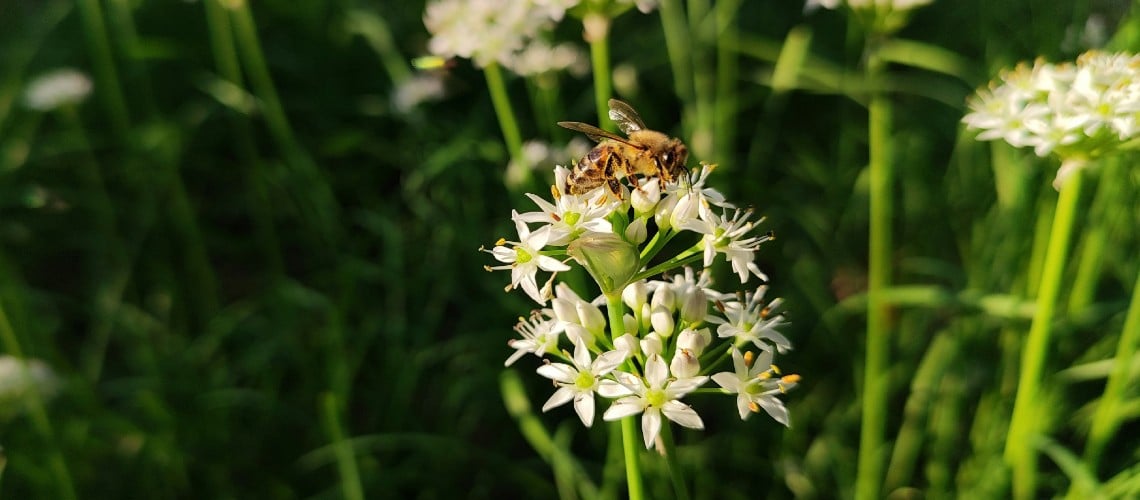Wasps and bees love to live in our gardens, mainly when we cultivate flowers and other plants that actively attract them. It is a good thing to create an attractive environment for our flying friends as they play an essential part in our natural ecology.
The important thing is to create areas away from hedging plants and places that are often used by your family, to reduce the possibility of them being disturbed and stinging people nearby.
Why are bees and wasps important?

- Pollinating local flora and increase the production
- Pollinating food plants to increase growth
- Produce honey – in your garden if you are a knowledgeable beekeeper
Wasps, in particular, are seen as a pest, something you don’t want to have in your garden. But they do more good than bad as long as they are in a position away from your house and recreation areas. Wasps are good for:
- Pollination
- Pest control that protects your plants
- Delivering yeast to grapes
Plants that attract bees and wasps
Bees
Bees love flowers, especially colourful varieties, here are some other plants that will help attract bees to your garden:
- Borage: Known as the bee bush, it’s a medicinal herb with bright blue flowers
- Rosemary: Also a herb, great for medicinal applications as well as cooking aromatic food
- Catnip: Cats love it but so do bees and other pollinators like butterflies
- Flowering Currant: The pink flowers attract butterflies and bees in springtime
- Crocuses: Purple and blue flowers that bees love to visit
- Pussy Willows: Flowers that have abundant pollen for bees
- Echinacea: Also known as coneflowers, they tend to bloom later than other varieties of flowers
- Sunflowers: Have high-quality pollen for bees. They also provide seeds for the local birds
- Lilacs: Bees love both the nectar and pollen they can get from lilac flowers
- Hyacinth: Have a variety of bright colours and also produce nectar as well as pollen
Wasps
- Sweet Fennel: is a herb that has small yellow flowers in summer that attract wasps, bees and butterflies
- Queen Anne’s Lace: a delicate flower named because when in bloom it resembles lace, it is also known by the name of wild carrot, and it has leaves that can irritate the skin
- Yarrow: has flowers that are pink, white or yellow. It’s a robust plant often used for medicinal purposes
- Spearmint: Wasps love eating the insects that are attracted to the spearmint plant and can reduce the effect of stings when applied to the bite
One thing you may want to do is design your garden to maximise the benefit to bees while protecting your family from stings—especially young ones. Plant flowers and vegetables away from the main traffic areas. Add a fence or a low artificial hedge to discourage people from trampling the area and being exposed to wasps and bees.
10 plants that repel bees and wasps
1. Marigold
Marigolds are a vibrant and effective choice for repelling bees, wasps, and flies. They release a distinct scent that many insects dislike, and their bright orange and yellow petals add a splash of color to any garden.
Try planting marigolds around walkways and seating areas, or pair them with tomatoes as a natural pest deterrent in your vegetable garden.
2. Eucalyptus

3. Wormwood

4. Lemongrass
Lemongrass is popular for its natural citronella oil, which not only repels wasps and flies but also deters mosquitoes. Plant it in containers around your patio, deck, or other outdoor seating areas. You can also use dried lemongrass indoors for a bee-repelling scent and cooking needs.
5. Cucumbers
Cucumber peels release a bitter compound that bees and wasps tend to avoid, making them effective yet simple plants that discourage wasps. Scatter cucumber peels in problem areas or plant cucumbers around outdoor eating areas to naturally discourage these insects.
6. Basil

7. Geraniums

8. Citronella
Known for its mosquito-repelling properties, citronella is one of the top plants that deter bees. The strong lemony scent of citronella plants masks other odors that might otherwise attract these insects. Plant citronella in pots around decks, patios, and windows to create a multipurpose insect barrier.
9. Lavender

10. Peppermint

What is the best season to grow plants that repel wasps in your garden?
The best season to plant bee-repelling plants or flowers that bees don’t like depends on the specific plant and your local climate. However, most bee-repelling plants benefit from being planted in the spring, allowing them to establish roots and grow robustly before the peak of summer when bees and wasps are most active.
For cooler climates, consider starting bee-repellent plants like basil or peppermint indoors in late winter, then transplanting them outdoors in spring.
Effective garden design for plants that repel bees
1. Keep your climate in mind when planting
Certain plants and flowers that don’t attract bees and wasps, such as lavender, eucalyptus, and marigolds, thrive in sunny, warm climates. On the other hand, plants like peppermint and basil can be more versatile, growing well both indoors and outdoors. For cooler or shaded gardens, consider using shade-tolerant bee-repelling plants like peppermint or basil.
2. Go for flexible and portable containers
Many bee-repelling plants grow well in containers, which allows you to move them around your garden to areas where they are most effective. For instance, you can place potted peppermint or basil near outdoor seating areas or bring citronella and lavender indoors during colder months.
3. Strategically place the plants around your house
Did you know you can create a natural insect barrier by figuring out the right positions for plants that repel bees? Plant bee-repellent plants like marigolds, basil, and citronella near patios, walkways, and entrances. This way the chances of bees or wasps disturbing you, family members, or guests are much, much lower!
4. Opt for companion plants
Some bee-repelling plants can enhance the growth of nearby vegetables and flowers. For example, marigolds are excellent companion plants for tomatoes and help deter other pests as well. This way, you can cultivate a productive garden with fewer harmful insects while reducing bee and wasp presence.
Best box hedge options
Any plant that flowers is likely to attract bees and wasps so for your hedging ensure that you choose plants that don’t flower and produce nectar.
This not only makes it challenging to walk near the area where the boxed hedge is but also makes it more difficult to maintain.
If you want to have hedges as boundaries in your garden, consider installing an artificial hedge. They look beautiful, take no time to grow and require very little maintenance. Instant hedging ensures that you have the best look for your garden twelve months of the year.
If you do have a problem at your home with bees, don’t try to kill them yourself or call an exterminator. Try calling a bee relocation service who will relocate the bees. They are essential to our ecology, so we need to look after them.
FAQs
What smell will keep bees away?
Bees tend to avoid strong scents like lavender oil, citronella oil, olive oil, vegetable oil, lemon, and lime. Scents like peppermint and eucalyptus also naturally repel bees without harming them, making it an excellent choice for bushes that don’t attract bees. These strong aromas mask the smells that attract bees, keeping them from coming close to areas where these scents are present.
Are bee-repellent plants safe for other pollinators?
Yes, most bee-repellent plants are safe for other pollinators! While bees tend to avoid specific plants due to strong scents, other pollinators, like butterflies and moths, are often unaffected and can still enjoy your garden.
Can bee-repellent plants be grown indoors?
Absolutely! Many bee-repellent plants, like peppermint and lavender, thrive indoors and can add both fragrance and beauty to your home, all while keeping bees at bay. Just ensure they have adequate sunlight and proper drainage.
Do bee-repellent plants affect honey production?
No, planting bee-repellent plants in your garden will not impact honey production overall. Bees will naturally avoid these plants but can still find and pollinate other flowering plants nearby.
Are bee-repellent plants effective in all climates?
Bee-repellent plants can be effective in many climates, but their success often depends on the plant’s individual climate preferences. For example:
- Warm, Sunny Climates: Plants like lavender, citronella, eucalyptus, and marigolds thrive in warm and sunny areas. These plants release strong scents in the heat, which maximizes their bee-repelling effects. In colder climates, some of these plants may not survive the winter unless brought indoors.
- Cooler or Shaded Climates: Plants like peppermint and basil are more adaptable and can grow well in cooler or partially shaded conditions. They’re also suitable for indoor growth, making them effective bee-repelling options year-round.
Indoor Adaptability: Some plants that don’t attract bees, such as peppermint, basil, and lavender, thrive indoors if they receive sufficient light. This makes it possible to use them as bee deterrent plants in cooler climates where outdoor growth is limited.

















